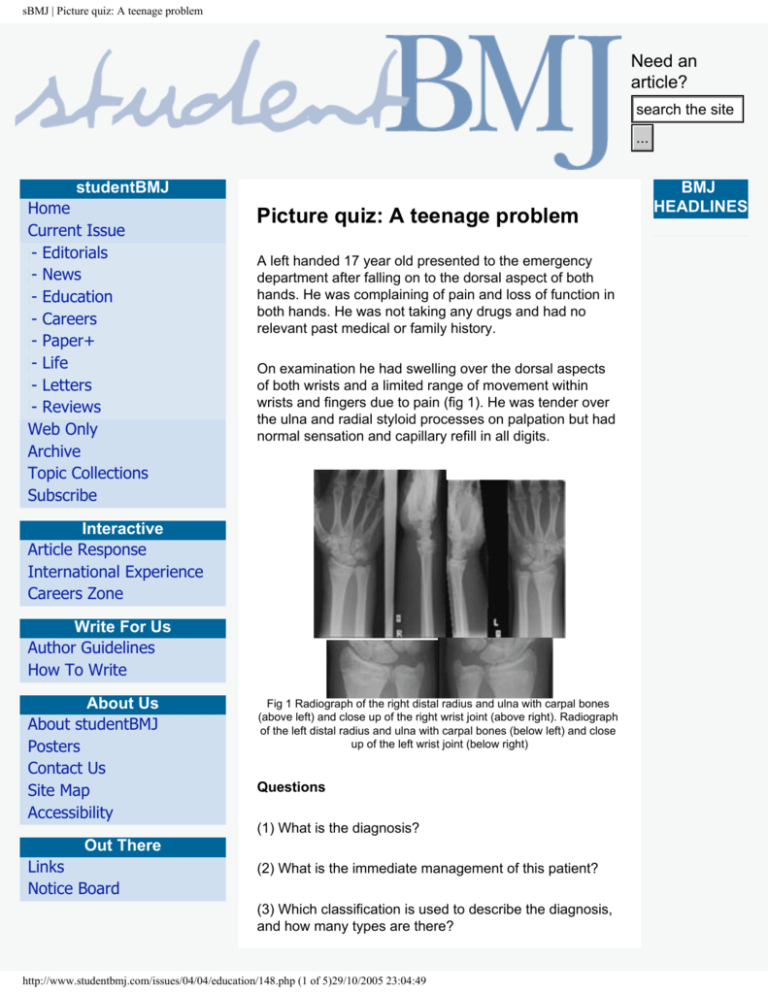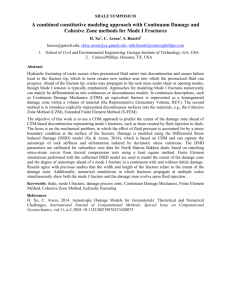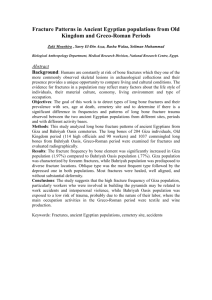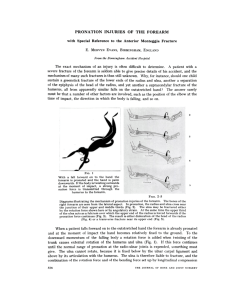sBMJ | Picture quiz: A teenage problem
advertisement

sBMJ | Picture quiz: A teenage problem Need an article? search the site ... studentBMJ |Home |Current Issue |- Editorials |- News |- Education |- Careers |- Paper+ |- Life |- Letters |- Reviews |Web Only |Archive |Topic Collections |Subscribe Picture quiz: A teenage problem A left handed 17 year old presented to the emergency department after falling on to the dorsal aspect of both hands. He was complaining of pain and loss of function in both hands. He was not taking any drugs and had no relevant past medical or family history. On examination he had swelling over the dorsal aspects of both wrists and a limited range of movement within wrists and fingers due to pain (fig 1). He was tender over the ulna and radial styloid processes on palpation but had normal sensation and capillary refill in all digits. Interactive |Article Response |International Experience |Careers Zone Write For Us |Author Guidelines |How To Write About Us |About studentBMJ |Posters |Contact Us |Site Map |Accessibility Fig 1 Radiograph of the right distal radius and ulna with carpal bones (above left) and close up of the right wrist joint (above right). Radiograph of the left distal radius and ulna with carpal bones (below left) and close up of the left wrist joint (below right) Questions (1) What is the diagnosis? Out There |Links |Notice Board (2) What is the immediate management of this patient? (3) Which classification is used to describe the diagnosis, and how many types are there? http://www.studentbmj.com/issues/04/04/education/148.php (1 of 5)29/10/2005 23:04:49 BMJ HEADLINES sBMJ | Picture quiz: A teenage problem (4) What are the three principles of fracture management? Answers (1) Bilateral Salter-Harris type III fractures of the radius; the fracture occurs through the epiphysis and involves the joint. (2) Assessment and treatment of airway, breathing, and circulation. Assess for neurovascular compromise distal to fracture sites. Splint fractures and provide analgesia through oral, inhaled, intravenous, intramuscular, or intranasal channels. Assess for other injuries. Consider definitive fracture management. (3) Salter and Harris classification, first described in 1963. There are five types based on radiological appearance and anatomical pattern of breakage (see discussion). (4) Reduction (open or closed). Immobilisation (internal, external, or intero-external). Rehabilitation (physical and occupational). Discussion About a third of all children's fractures involve the epiphyseal growth plate, the radiolucent cartilaginous zone present in abundance in all long bones (except the clavicle) of children (fig 2).1 Salter and Harris described and classified these fractures depending on radiological appearance and anatomical pattern of fracture.2 Each type requires treatment, and if mismanaged may result in growth disturbance, deformity, and functional impairment (fig 2). Fig 2 Normal anatomy of immature (growing) long bones Interpreting plain radiographs of epiphyseal fractures is http://www.studentbmj.com/issues/04/04/education/148.php (2 of 5)29/10/2005 23:04:49 sBMJ | Picture quiz: A teenage problem notoriously tricky, but imaging the unaffected side may improve the chances of recognising abnormalities. This case is unusual in that the patient sustained bilaterally identical fractures simultaneously. Direct trauma is the usual cause of fracture in children, but the history is often absent. A child with a fracture is likely to be in pain and withdrawn; the child is also likely to be reluctant to use the affected limb. Swelling and deformity may be minimal; a high index of suspicion is needed (fig 3). Types I and II are common and have an excellent prognosis because although they extend through the growth plate, the germinal layer is usually left intact so that growth disturbance is uncommon. Undisplaced fractures simply require immobilisation in a plaster of Paris cast. Types III and IV are uncommon, and a precise reduction is required; involvement of the articular surface and germinal layer make growth disturbance and functional impairment more likely if not managed correctly. This manipulation will usually involve a general anaesthetic. Type V is a crushing injury to the epi-physis, not originally described by Salter and Harris. It is rare and has a poor prognosis due to disruption of the blood supply to the epiphysis. Unfortunately, this is usually diagnosed retrospectively when limb deformity becomes apparent. As well as limb deformity, clinicians need to be aware of more immediate problems after fracture--resolve any distal neurovascular compromise and consider compartment syndrome in the hours after injury or manipulation under anaesthetic. http://www.studentbmj.com/issues/04/04/education/148.php (3 of 5)29/10/2005 23:04:49 sBMJ | Picture quiz: A teenage problem Fig 3 Salter-Harris classification of epiphyseal injuries. Type I--the epiphysis slips or separates from the metaphysic; type II--a fracture through the epiphyseal plate leaves a fragment of metaphysis attached to the epiphysis; type III--a fracture through the epiphysis extends to the epiphyseal plate; type IV--a fracture extends from the articular surface, though the epiphysis, and through the metaphysic; type V--a crush injury obliterates the epiphyseal plate Further reading McRae R, Esser M. Practical fracture treatment. 4th ed. London: Churchill Livingston, 2002 Bulstrode C, Buckwalter J, Carr A, Marsh L, Fairbank J, Wilson-MacDonald J. Oxford textbook of orthopedics and trauma. Oxford: Oxford University Press, 2002 James S Dawson senior house officer, Alexandra Hospital, Redditch Email: dawson@mailvivo.co.uk C J L Hetherington specialist registrar in emergency medicine, Selly Oak Hospital, Birmingham studentBMJ 2004;12:133-176 April ISSN 0966-6494 1. Rang M. Children's fractures. 2nd ed. Philadelphia: Lippincott, 1984:1. 2. Salter RB, Harris WR. Injuries involving epiphyseal plates. J Bone Joint Surg Am 1963;45:587-622. http://www.studentbmj.com/issues/04/04/education/148.php (4 of 5)29/10/2005 23:04:49 sBMJ | Picture quiz: A teenage problem -Copyright© 2005 BMJ Publishing Group LtdPrivacy Policy - Terms and Conditions http://www.studentbmj.com/issues/04/04/education/148.php (5 of 5)29/10/2005 23:04:49









